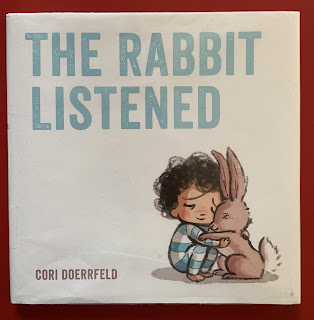You may not see the connection between these 2 books. Let me explain with another crucial scripture:
All humans carry in them the Image of God. Genesis explains in 2 places and then declares us good (God created humans in God’s own image... And God blessed them and called them good. Genesis 1:27 & 28a, 31).
The 2nd book below about human nature, empowers our goodness (Dare I write God-ness?) and blessing in each of us. No matter which name we call God, “The Great I Am” is in us and provides for our resilience!
Picture Book: I Am: The Names of God for Little Ones
Author: Diane
M. Stortz
Illustrator: Diane Le Feyer
Summary: Each
double page of this resource book (not to be read all at once) includes several
components: The Name of God, the word/phrase in its original language, a bit of
a key scripture, a paraphrase of that scripture or another, a short prayer, and
a beautiful illustration. Here is a quick summary of all pages. The names of
God are in bold.
Creator - Elohim (Genesis 1:1)
I
Am –
Jehovah (Moses & the Burning Bush – Exodus 3:14)
The
Lord Will Provide
– Jehovah Jireh (Abraham & Isaac – Genesis 22:14 & Manna - Exodus 16)
The
Lord Who Heals
- Jehovah Rophe (Exodus 15:26 & Naaman 2 Kings 5)
Son
of God – Luke
1:35 (Jesus’ Baptism – Matthew 3)
Teacher
– Rabbi (Matthew
5-7)
Friend – (John 15:14 & 21)
King
of Kings –
(Revelation 17:14, Revelation 19-22)
Hanna’s Comments: Very cleverly and efficiently designed, this
book gives so much in its pages! Appropriately, it is sensitive to the violence
of some of these stories.
This author has also written Say and Pray Bible: First Words, Stories, and Prayers for infants and toddlers. I love its design! It uses word bubbles for building simple vocabulary around a few Bible stories.
Age Appropriateness: 3 and up
Formats other than Book: None at present
Scripture Connections: See above
PBT Applications: Insert components of this book at the end of a children’s worship or children’s moment. Also, use it to inspire you to design a lesson for older ages about the various names for God. Encourage them to share what names they prefer for God.
Author: Bela
Barbosa
Illustrator: Edel Rodriguez
Summary: The author calls this book a tool kit for building self-esteem and self-worth. Connect it to the scriptures mentioned above and you will help build your listeners' sense of being precious children of God, endowed with goodness, strength, and resilience. The first pages offer a bit of an emotional assessment: How do you feel on the inside?
This book offers ways to feel better. For each double-page spreads you'll find a description of feelings, directions for a stance or fluid movement, and words to say. I encourage you to insert deep breathing, explaining that the Holy Spirit is God's breath.
Hanna’s Comments: Movement is crucial while reading this book so have a person as a designated book holder or use a book stand while you lead the movement. Reading all these pages at once would be too much.
Choose a few or use this book as a resource and insert an idea into a classroom
ritual or lesson’s closing prayer. Because the body is the focus here, you can glean ideas for a lesson about The Body of Christ. Certainly, we gain strength from others too!
Age Appropriateness: 2 and up
Formats other than Book: Tablet
Scripture Connections: Any scripture about God’s strength, such as Habakkuk 3:19 & Isaiah 12:2 (God is my strength.) OR about resilience, such as the story of Ruth & Naomi. Remember PBT scripture connections can be spiritual ideas (the first example) or spiritual stories (the 2nd
example).
Connections to The Revised Common Lectionary: I listed both books in my Trinity Treasures preschool curriculum when the RCL listed the story of the Burning Bush (Year A). The 2nd book I listed for the lesson on Isaiah 12 (Year C -theme: My Strength).
PBT Applications: Use ideas for this book and integrate them into a lesson for teens about how we find strength in The Body of Christ. Together create body postures and transform them into body prayers.


















